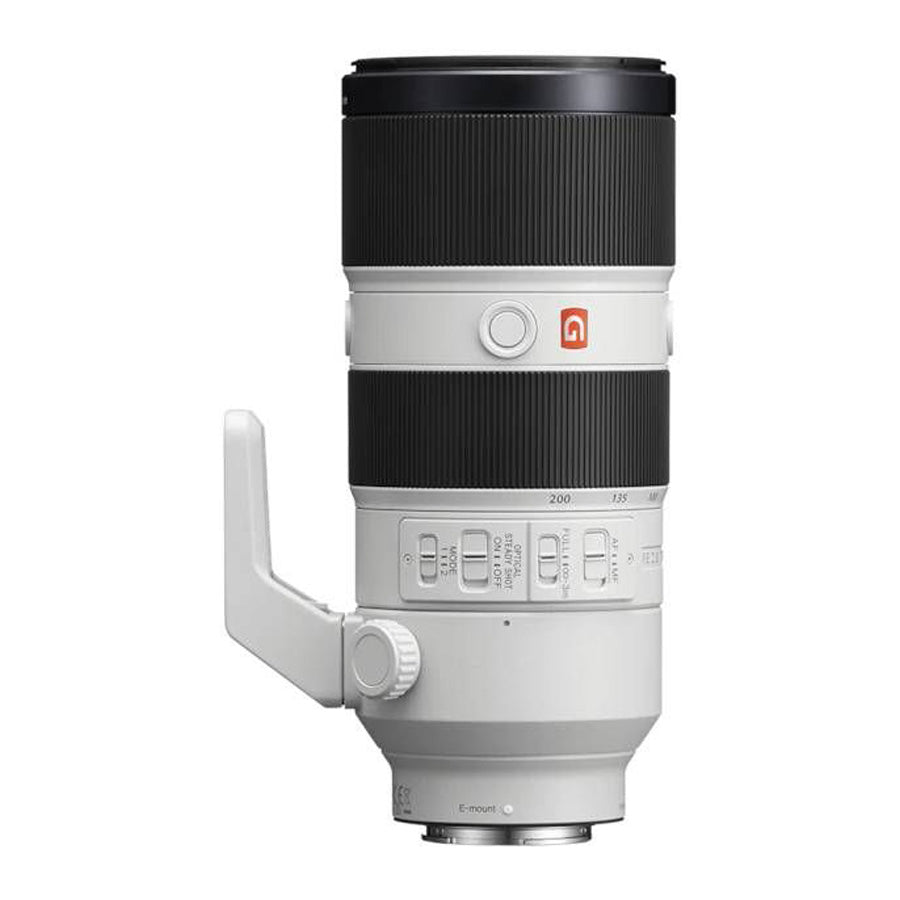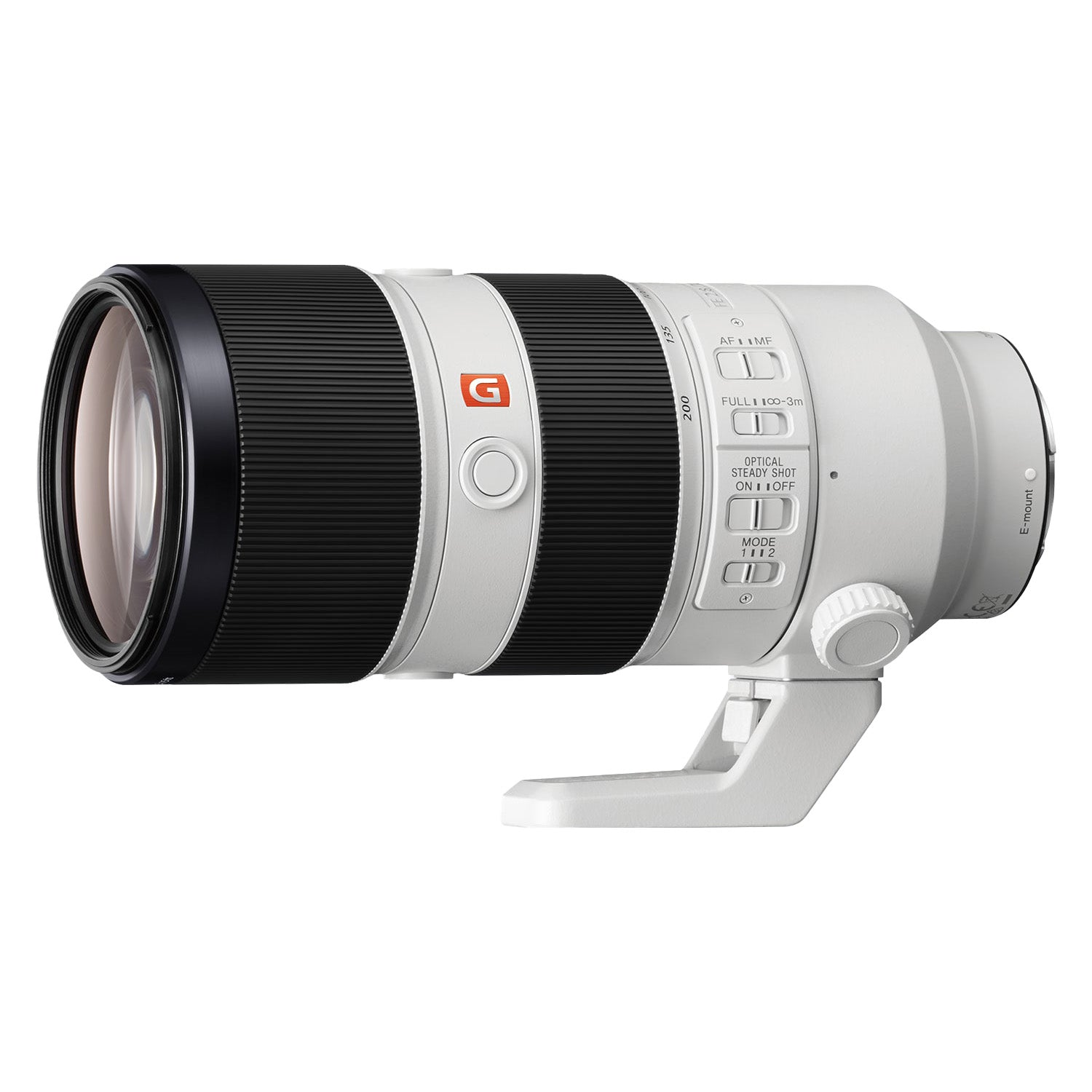Product Description
Sony FE 70-200mm f/2.8 G Master Telephoto OSS Lens
Overview
The Sony FE 70-200mm f/2.8 G Master Telephoto OSS Lens offers unparalleled performance for both still photography and video. Its advanced optical design and robust construction make it ideal for capturing extraordinary detail, achieving stunning bokeh, and delivering reliable performance in a variety of shooting conditions.

Key Features
Extraordinary Detail and Bokeh
- Advanced Optics: The lens features three aspherical elements, including one double-sided and one newly developed XA (eXtreme Aspherical) element with 0.01 micron surface precision. These elements effectively control aberrations, providing exceptional resolution and smooth, beautiful bokeh.
- Bokeh Quality: An 11-blade circular aperture enhances bokeh quality, creating natural-looking highlights and a pleasingly blurred background that enriches your compositions.
Natural Images Without Spurious Colour
- Chromatic Aberration Control: Four ED (Extra-low Dispersion) glass elements and two Super ED glass elements work together to suppress chromatic aberrations and colour bleeding, ensuring sharp, clear images with accurate colour reproduction.

Class-Leading Close-Up Performance
- Close-Up Capability: With a minimum focusing distance of 0.96m and a 0.25x maximum magnification, this lens excels in close-up photography. ED glass elements and a floating focus mechanism enhance performance for portraits and telephoto macro shots.
Fast AF Optimized for Stills and Video
- Focus System: Two separate actuators— a powerful ring SSM (Super Sonic wave Motor) for the front group and a double linear motor for the rear group—provide rapid and precise focusing. Real-time feedback from position sensors ensures optimal performance.
- Movie AF: The lens’s double linear motor aids in providing smooth and silent focusing, with minimal focus breathing, making it suitable for video recording.

Outstanding Clarity and Contrast
- Nano AR Coating: Advanced Nano AR Coating technology reduces reflections that cause flare and ghosting, improving clarity and contrast for superior image quality.
Operation and Reliability Optimised for Fieldwork
- Handling: The lens maintains a constant length during focusing and zooming, offering excellent handling in various shooting situations. Focus hold buttons and a focus range limiter switch enhance operational efficiency.
- Image Stabilisation: MODE 2 stabilisation allows for effective image stabilisation even during panned shots, and the lens’s built-in stabilisation system ensures sharp, blur-free images. When used with α series bodies featuring built-in stabilisation, 5-axis image stabilisation is also available.

Removable Rotating Tripod Mount
- Versatile Mount: The tripod mount allows quick removal of the camera for handheld shooting and features a rotating mechanism for easy orientation changes between landscape and portrait modes. A lock mechanism ensures secure attachment.
High Reliability in Harsh Conditions
- Durability: The lens is designed with a sealed dust and moisture-resistant construction, complemented by a fluorine-coated front element to provide extra protection and ensure reliable performance in challenging environments.

Specifications
- Model Name: FE 70-200mm f/2.8 G Master Telephoto OSS
- Mount Type: E-Mount/Full-Frame Format
- Aperture Range: f/2.8 to f/22
- Lens Elements: 21 elements in 16 groups (including 3 aspherical and 6 ED elements)
- Aperture Blades: 11 (Circular)
- Minimum Focusing Distance: 0.96 m
- Maximum Magnification: 0.25x
- Dimensions: 88 x 200 mm
- Weight: 1,480 grams
- Stabilisation: Built-in Optical SteadyShot
- Tripod Mount: Removable and rotating
Payment & Security
Your payment information is processed securely. We do not store credit card details nor have access to your credit card information.





















